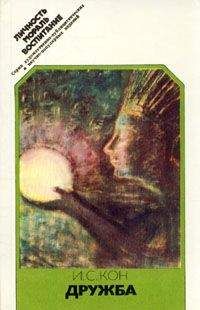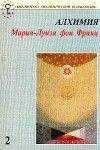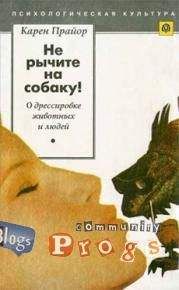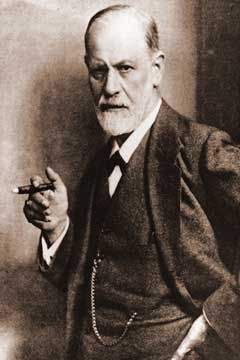Эллиот Аронсон - Общественное животное. Введение в социальную психологию
Скачивание начинается... Если скачивание не началось автоматически, пожалуйста нажмите на эту ссылку.
Жалоба
Напишите нам, и мы в срочном порядке примем меры.
Описание книги "Общественное животное. Введение в социальную психологию"
Описание и краткое содержание "Общественное животное. Введение в социальную психологию" читать бесплатно онлайн.
46. Josephson, W.D. (1987). Television violence and children's aggression: Testing the priming, social script, and disinhibition prediction. Journal of Personality and Social Psychology, 53,882-890.
47. Thomas, M.H., Norton, R., Lippincott, E., amp; Drabman.R. (1977). Desensitization to portrayals of real-life aggression as a function of exposure to television violence. Journal of Personality and Social Psychology, 35, 450-458.
48. См. недавний обзор исследований по данному вопросу: Phillips.D.P.
(1986). Natural experiments on the effects of mass media violence on fatal aggression: Strengths and weaknesses of a new approach. In L. Berkowitz (Ed.), Advances in experimental social psychology (Vol. 19, pp. 207-250). Orlando, FL: Academic Press.
49. Phillips, D.P. (1983).The impact of mass mediaviolence on U.S.homicides. American Sociological Review, 48, 560-568.
50. Phillips, D.P. (1986).Natural experiments on the effects of mass mediavio-lence on fatal aggression: Strengths and weaknesses of a new approach. In L. Berkowitz (Ed.), Advances in experimental social psychology (Vol. 19, pp. 207-250). Orlando, FL: Academic Press.
51. The violence bag. (1971, December 13). Newsweek, p. 110,
52. Drop that gun, Captain Video. (1975, March 10). Newsweek, pp. 81-82.
53. Harbert, Т. (1993). Interview with Charlie Rose, PBS.
54. Diener, E., amp; Defour, D. (1978). Does television violence enhance program popularity? Journal of Personality and Social Psychology, 36, 333-341.
55. Federal Bureau of Investigation. (1990). Uniform Crime Reports for the United States. Washington, D.C.: Government Printing Office.
56. Malamuth, N.M. (1983). Factors associated with rape as predictors of laboratory aggression against women. Journal of Personality and Social Psychology, 45, 432- 442. Malamuth, N.M. (1986). Predictors of naturalistic sexual aggression. Journal of Personality and Social Psychology, 50, 953-962.
57. Donnerstein, E. (1980). Aggressive erotica and violence against women. Journal of Personality and Social Psychology, 39, 269-277.
58. Malamuth N. (1981). Rape fantasies as a function of exposure to violent sexual stimuli. Archives of Sexual Behavior, 10, 33-47.
59. Malamuth, N., amp; Check, J. (1981). The effects of mass media exposure on acceptance of violence against women: A field experiment. Journal of Research in Personality, 15, 436-446.
60. Foa, P. (1978). What's wrong with rape. In M. Vetterling-Broggin, F. Ellison, and J. English (Eds.), Feminism and philosophy (p. 355). Totowa, NJ: Littlefield Adams.
61. Malamuth, N., Haber, S., amp; Feshbach, S. (1980). Testing hypothesis regarding rape: Exposure to sexual violence, sex differences, and the ‹normality› of rapists. Journal of Research in Personality, 14, 121-137.
62. Check, J., amp; Malamuth, N. (1983),Can there be positive effects of participation in pornography experiments? Journal of Sex Research, 20, 14-31,
63. Linz, D., Donnerstein, E., amp; Penrod, S. (1988). Effects of long-term exposure to violent and sexually degrading depictions of women. Journal of Personality and Social Psychology, 55,758-768.
64. Barker, R., Dembo, Т., amp; Lewin, K. (1941). Frustration and aggression: An experiment with young children. University of Iowa Studies in Child Welfare, 18, 1-314.
65. Harris, M. (1974). Mediators between frustration and aggression in a Field experiment. Journal of Experimental and Social Psychology, 10, 561-571.
66. Kulik, J., amp; Brown, R. (1979). Frustration, attribution ofbiame, and aggression. Journal of Experimental and Social Psychology, 15, 183-194.
67. Tocqueville, A. ^(1981). Democracy in America. Westminster, MD: Random House. Рус. пер. - Токвиль А. Демократия в Америке. M.: Прогресс, 1992.
68. Mallick, S., amp; McCandless, В. (1966). A study of catharsis of aggression. Journal of Personality and Social Psychology, 4, 591-596.
69. Johnson, Т.Е., amp; Rule, B.G. (1986). Mitigating circumstances information, censure, and aggression. Journal of Personality and Social Psychology, 50, 537-542.
70. Josephson, W.L. (1987). Television violence and children's aggression: Testing the priming, social script, and disihibition predictions. Journal of Personality and Social Psychology, 53,882-890.
71. Berkowitz, L. (1965). Some aspects of observed aggression. Journal of Personality and Social Psychology, 2, 359-369.
72. Berkowitz,L., amp; Geen, R. (1966). Film violence and the cue properties of available targets. Journal of Personality and Social Psychology, 3, 525-530.
73. Berkowitz, L., amp; LePage, A. (1967). Weapons as aggression-eliciting stimuli, Journal of Personality and Social Psychology, 7, 202-207.
74. Berkowitz, L. (1971). Control of aggression (p. 68). Unpublished.
75. Zimbardo, P. (1969). The human choice: Individuation, reason, and order versus deindividuation, impulse, and chaos. In W. Arnold and D. Levine (Eds.), Nebraska Symposium on Motivation, 17, 237-307.
76. Mullen, В. (1986). Atrocity as a function of lynch mob composition: A self-attention perspective. Personality and Social Psychology Bulletin, 12, 187-197.
77. Clark, К. (1971). The pathos of power: A psychological perspective. American Psychologist, 26,1047-1057.
78. Aristotle (1954). Rhetoric. In W.R. Roberts (Trans.), Aristotle, rhetoric and poetics (p. 22). New York: Modern Library. Рус. пер. - ‹Риторика Аристотеля›.
79. Sears, R., Maccoby, E., amp; Levin, H. (1957). Patterns of child rearing. Evanston, IL: Row, Peterson. Baumrind, D. (1966). Effects of authoritative parental control on child behavior. Child Development, 37, 887-907. Becker, W. (1964). Consequences of different kinds of parental discipline. In M.L.Hoffman and L.W.Hoffman (Eds.), Review of Child Development Research (Vol. 1). New York: Russell Sage. Owens, D., amp; Straus, M. (1975). The social structure of violence in childhood and approval of violence as an adult. Aggressive Behavior, 1, 193-211.
80. Hamblin, R., Buckholt, D., Bushell, D., Ellis, D., amp; Ferritor, D. (1969, January). Changing the game from ‹get the teacher› to ‹learn›. Trans-Action, pp. 20-31.
81. ffaney, С. (1979).Apsychologistlooksatthecriminaijusticesystem. InA. Calvin (Ed.), Challenges and alternatives to the American criminal justice system (pp. 77-85). Ann Arbor, MI: University International Press.
82. Eichmann, C. (1966). The impact of the Gideon decision on crime and sentencing in Florida. Tallahassee, FL: Division of Corrections Publications.
83. ffaney, C., Banks, C., amp; Zimbardo, P. (1973). Interpersonal dynamics in a simulated prison. International Journal of Criminology and Penology, /, 69-97.
84. Aronson, E., amp; Carlsmith, J.M. (1963). The effect of severity of threat on the devaluation of forbidden behavior. Journal of Abnormal and Social Psychology, 66, 584-588. Freedman, J. (1965). Long-term behavioral effects of cognitive dissonance. Journal of Experimental and Social Psychology, 1, 145-155.
85. Olweus, D. (1991). Bully/victim problems among school-children: Basic facts and effects of a school-based intervention program. In D. Pepler amp; K. Rubin (Eds.), The development and treatment of childhood aggression (pp. 411-448). Hilisdale, NJ: Eribaum.
86. U.S. President's Commission on Law Enforcement and Administration of Justice. (1967). The challenge of crime in afree society: A report. Washington, D.C.: U.S. Government Printing Office.
87. Bandura, A., Ross, D., amp; Ross, S. (1963). Imitation of film-mediated aggressive models. Journal of Abnormal and Social Psychology, 66, 3-11. Bandura, A., Ross, D., amp; Ross, S. (1963). Vicarious reinforcement and imitative learning. Journal of Abnormal and Social Psychology, 67,601-607.
88. Brown, P., amp; Elliot, R. (1965). Control of aggression in a nursery school class. Journal of Experimental Child Psychology, 2, 103-107.
89. Davits, J. (1952). The effects of previous training on postfrustration behavior. Journal of Abnormal and Social Psychology, 47, 309-315.
90. Baron, R.A., amp; Kepner, C.R. (1970). Model's behavior and attraction toward the model as determinants of adult aggressive behavior. Journal of Personality and Social Psychology, 14,335-344.
91. Baron, R.A. (1976). The reduction of human aggression: A field study of the influence of incompatible reactions. Journal of Applied Social Psychology, 6, 260-274.
92. Feshbach, S. (1971). Dynamics and morality of violence and aggression: Some psychological considerations. American Psychologist, 26, 281-292.
93. Michener, J. (1971). Kent State: What happened and why. New York: Random House.
94. Feshbach, N., amp; Feshbach, S. (1969). The relationship between empathy and aggression in two age groups. Development Psychology, 1, 102-107.
95. Feshbach, N. (1978, March). Empathy training: A field study in affective education. Paper presented at the American Educational Research Association, Toronto, Ontario, Canada. Feshbach, N., amp; Feshbach, S. (1981, April). Empathy training and the regulation of aggression: Potentialities and limitations. Paper presented at the convention of the Western Psychological Association.
96. Hammock, G.S., amp; Richardson, D.R. (1992). Aggression as one response to conflict. Journal of Applied Social Psychology, 22, 298-311.
К главе 7 Предрассудок
1. Poussaint, Л. (1971), A Negro psychiatrist explains the Negro psyche, in Confrontation (pp. 183-184). New York: Random House.
2. Clark, K., amp; Clark, M. (1947). Racial identification and preference in Negro children. In T.M. Newcomb and E.L. Hartley (Eds.), Readings in Social Psychology (pp. 169-178). New York: Holt.
3. Goldberg, P. (1968, April). Are women prejudiced against women? Trans-Action, pp. 28-30.
4. Jemmott, J.B., amp; Consoles, E. (1989). Social status, the status distribution, and performance in small groups. Journal of'Applied Social Psychology, 19, 584-598.
5. Hraba, J., amp; Grant, G. (1970). Black is beautiful: A reexamination of racial prejudice and identification. Journal of Personality and Social Psychology, 16, 398-402. Banks, С. (1976). White preference in blacks: A paradigm in search of a phenomenon. Psychological Bulletin, 83, 1179-1186. Ward, С. (1979). Differential evaluation of male and female expertise: Prejudice against women? British Journal of Social and Clinical Psychology, 18, 65-69. Ward, С. (1981). Prejudice against women: Who, when, and why? Sex Roles, 7, 163-171.
6. Petfigrew, Т.Е. (1989). The nature of modern racism in the United States. Revue Internationale de Psychologie Sociale, 2, 291-303.
7. Time, February 2, 1987, pp. 18-21.
8. AIlporf, G. (1954, 1980). The nature of prejudice {p. 13). Reading, MA:Addison-Wesley.
9. Newsweek, November 25, 1974, p. 39.
10. Neugarten,B. (1946). Social class and friendship among schoolchildren. American Journal ofSociology, 5/, 305-313.
11. Bond, C.F., Jr., DiCandia, C.G., amp; MacKinnon, J.R. (1988). Response to violence in a psychiatric setting: The role of the patient's race. Personality and Social Psychology Bulletin, 14,448-458.
12. Bodenhausen, G., amp; Wyer, R. (1985). Effects of stereotypes on decision making and information-processing strategies. Journal of Personality and Social Psychology, 48, 267-282.
13. Shafer, D.R., amp; Wallace, A. (1990). Belief congruence and evaluator homophobia as determinants of the attractiveness of competent homosexual and heterosexual males. Journal of Psychology amp; Human Sexuality, 3, 67-87.
14. Steele, С. (1992, April). Race and the schooling of black Americans. The Atlantic Monthly, pp. 68-78.
15. Steele, С., amp;Aronson, J. (1994). Stereotype vulnerability: Apsychological approach to underachievement among black Americans. Paper presented at the meeting of the Western Psychological Association, Kona, Hawaii, April, 1994.
16. Pettigrew, T.F. (1979). The ultimate atrribution error: Extending Allport's cognitive analysis of prejudice. Personality and Social Psychology Bulletin, 5, 461-476.
17. Ibid.
18. Feldman-Summers, S., amp; Kiesler, S.B. (1974). Those who are number two try harder: The effect of sex on attributions of causality. Journal of Personality and Social Psychology, 30,80-85.
19. Deaux, К., amp; Ernsweiler, Т. (1974), Explanations of successful performance on sex-linked tasks: What is skill for male is luck for the female. Journal of Personality and Social Psychology, 29, 80-85.
20. Nicholls, J.G. (1975). Causal attributions and other achievement-related cognitions: Effect of task outcome, attainment value, and sex. Journal of Personality and Social Psychology, 31,379-389.
21. Weinberg, R.S., Richardson, P.A., amp; Jackson, A. (1983). Effect of situation criticality on tennis performance of males and females. Newsletter of the Society for the Advancement of Soda! Psychology, 9, 8-9.
22. Turner, M., amp; Pratkanis, A. (1993). Effects of preferential and meritorious selection on performance: An examination of intuitive and self-handicapping perspectives. Personality and Social Psychology Bulletin, 19, 47-58.
Подписывайтесь на наши страницы в социальных сетях.
Будьте в курсе последних книжных новинок, комментируйте, обсуждайте. Мы ждём Вас!
Похожие книги на "Общественное животное. Введение в социальную психологию"
Книги похожие на "Общественное животное. Введение в социальную психологию" читать онлайн или скачать бесплатно полные версии.
Мы рекомендуем Вам зарегистрироваться либо войти на сайт под своим именем.
Отзывы о "Эллиот Аронсон - Общественное животное. Введение в социальную психологию"
Отзывы читателей о книге "Общественное животное. Введение в социальную психологию", комментарии и мнения людей о произведении.













